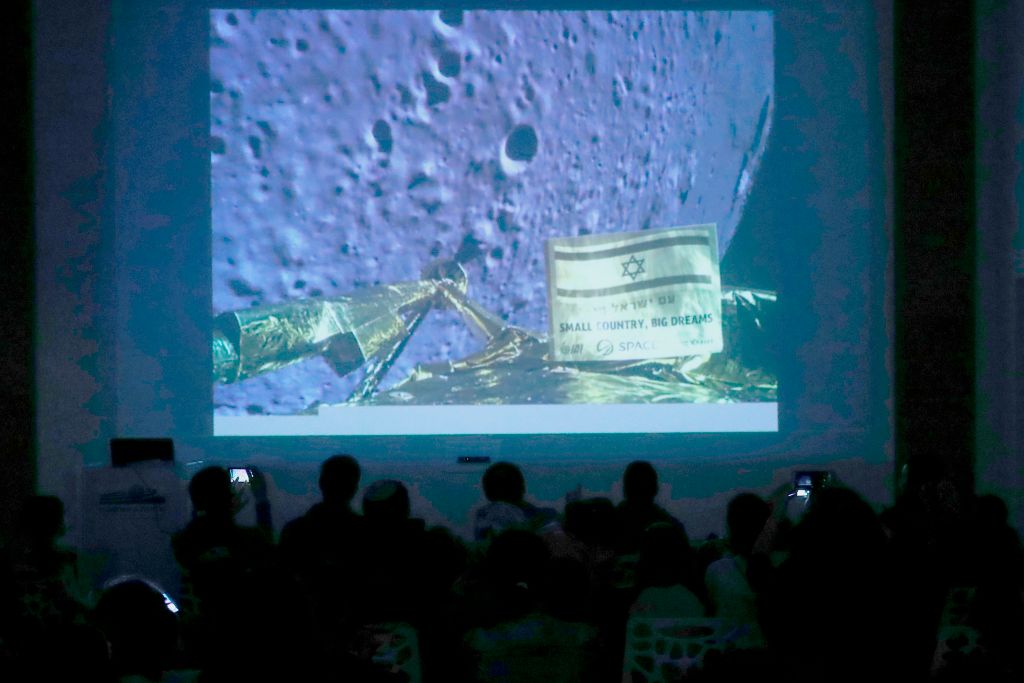Israel's privately funded lunar craft crashed just before landing on the moon


Israel's Beresheet spacecraft came very close to becoming the first privately financed lunar craft to land on the moon's surface, but it crashed during its final descent on Thursday. Israel would have been only the fourth nation to land a spacecraft on the lunar surface, following the Soviet Union (1966), the U.S. (1969, with astronauts on board), and China (2019). Beresheet ("In the Beginning") was in its final descent when apparent engine failure and other technical difficulties ended the mission. The $100 million project kept costs low by hitching a ride into space on a SpaceX cargo rocket in February.
"I am sorry to say that our spacecraft did not make it in one piece to the moon," said Opher Doron, the manager of Israel Aerospace Industries' Space Division, which built the spacecraft with private Israeli nonprofit SpaceIL. "We made it all the way to the moon. This is a great accomplishment. We are the seventh country to make it all the way to the moon." Beresheet's mission included scientific research on magnetic fields, though, BBC News notes, "its first job was to use its high resolution cameras to take some photos — including a selfie — which it did manage before the crash."
After the first stage of the live-streamed descent went according to plan, Doron announced that the engine had cut out, and after it came online again a few seconds later, mission control lost contact with Beresheer. At that moment, it was about 74 miles from its intended landing site, traveling at about 2,110 miles per hour. "I think that the achievement of getting to where we got is really tremendous," said project originator Morris Kahn. "I think we can be proud."
The Week
Escape your echo chamber. Get the facts behind the news, plus analysis from multiple perspectives.

Sign up for The Week's Free Newsletters
From our morning news briefing to a weekly Good News Newsletter, get the best of The Week delivered directly to your inbox.
From our morning news briefing to a weekly Good News Newsletter, get the best of The Week delivered directly to your inbox.
A free daily email with the biggest news stories of the day – and the best features from TheWeek.com
Peter has worked as a news and culture writer and editor at The Week since the site's launch in 2008. He covers politics, world affairs, religion and cultural currents. His journalism career began as a copy editor at a financial newswire and has included editorial positions at The New York Times Magazine, Facts on File, and Oregon State University.
-
 Ski town strikers fight rising cost of living
Ski town strikers fight rising cost of livingThe Explainer Telluride is the latest ski resort experiencing an instructor strike
-
 ‘Space is one of the few areas of bipartisan agreement in Washington’
‘Space is one of the few areas of bipartisan agreement in Washington’Instant Opinion Opinion, comment and editorials of the day
-
 How robust is the rule of law in the US?
How robust is the rule of law in the US?TODAY’S BIG QUESTION John Roberts says the Constitution is ‘unshaken,’ but tensions loom at the Supreme Court
-
 Nobody seems surprised Wagner's Prigozhin died under suspicious circumstances
Nobody seems surprised Wagner's Prigozhin died under suspicious circumstancesSpeed Read
-
 Western mountain climbers allegedly left Pakistani porter to die on K2
Western mountain climbers allegedly left Pakistani porter to die on K2Speed Read
-
 'Circular saw blades' divide controversial Rio Grande buoys installed by Texas governor
'Circular saw blades' divide controversial Rio Grande buoys installed by Texas governorSpeed Read
-
 Los Angeles city workers stage 1-day walkout over labor conditions
Los Angeles city workers stage 1-day walkout over labor conditionsSpeed Read
-
 Mega Millions jackpot climbs to an estimated $1.55 billion
Mega Millions jackpot climbs to an estimated $1.55 billionSpeed Read
-
 Bangladesh dealing with worst dengue fever outbreak on record
Bangladesh dealing with worst dengue fever outbreak on recordSpeed Read
-
 Glacial outburst flooding in Juneau destroys homes
Glacial outburst flooding in Juneau destroys homesSpeed Read
-
 Scotland seeking 'monster hunters' to search for fabled Loch Ness creature
Scotland seeking 'monster hunters' to search for fabled Loch Ness creatureSpeed Read
